Abstract
Carbon turnover in response to abrupt changes in salinity, including the mobilization of glycogen for use in osmoregulation was studied with pulse-chase strategies utilizing nuclear magnetic resonance (NMR)-silent and NMR-detectable 12C and 13C isotopes, respectively. Growth of Agmenellum quadruplicatum in 30%-enriched13C bicarbonate provided sufficient NMR-detectability of intracellular organic osmoregulants for these studies. A comparison of NMR spectra of intact cells and their ethanol extracts showed that the intact cell data were suitable for quantitative work, and, when combined with ESR measurements of cell volumes, yielded intracellular glucosylglycerol concentrations without disrupting the cells. NMR pulse-chase experiments were used to show that 13C-enriched glycogen, which had previously been accumulated by the cells under nitrogen-limited growth at low salinities, could be utilized for the synthesis of glucosylglycerol when the cells were abruptly transferred to hypersaline media, but only in the light. It was also shown that the accumulation of glucosylglycerol in the light occurred on a time scale similar to that of cell doubling. Depletion of glucosylglycerol when cells abruptly transferred to lower salinities appeared to be rapid—the intracellular pool of this osmoregulant was decreased 2-fold within 2 hours of hypotonic shock.
Full text
PDF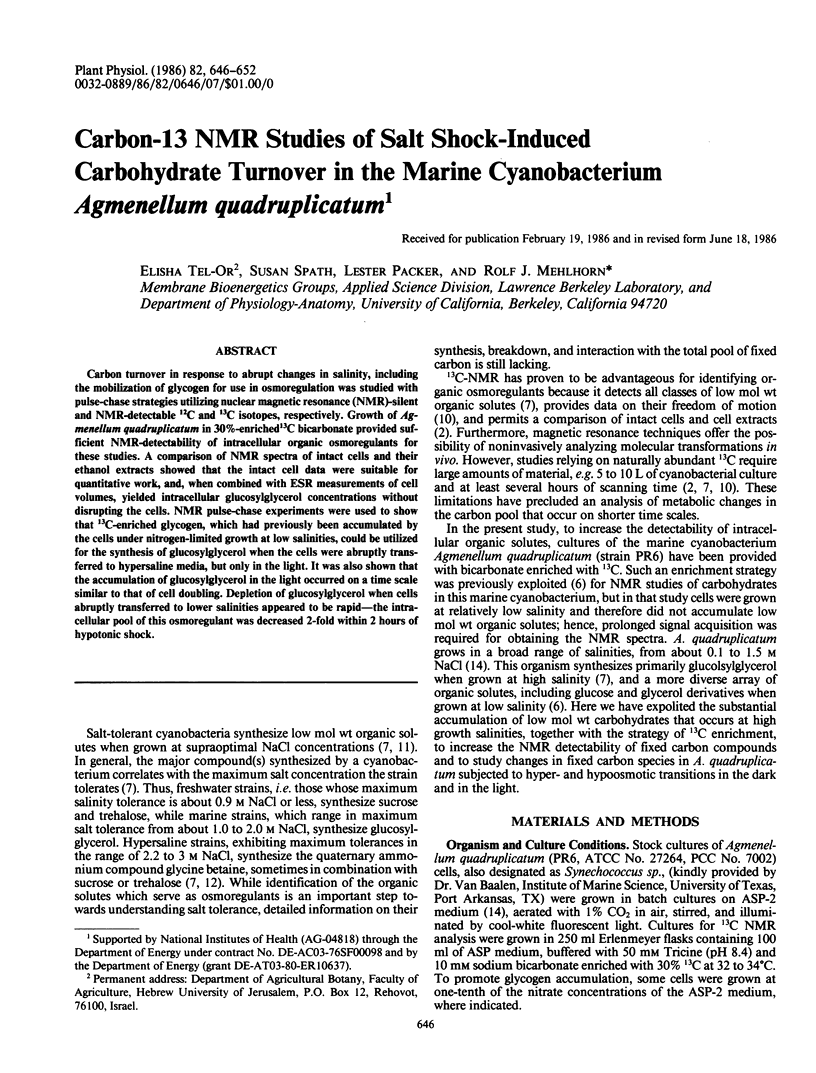
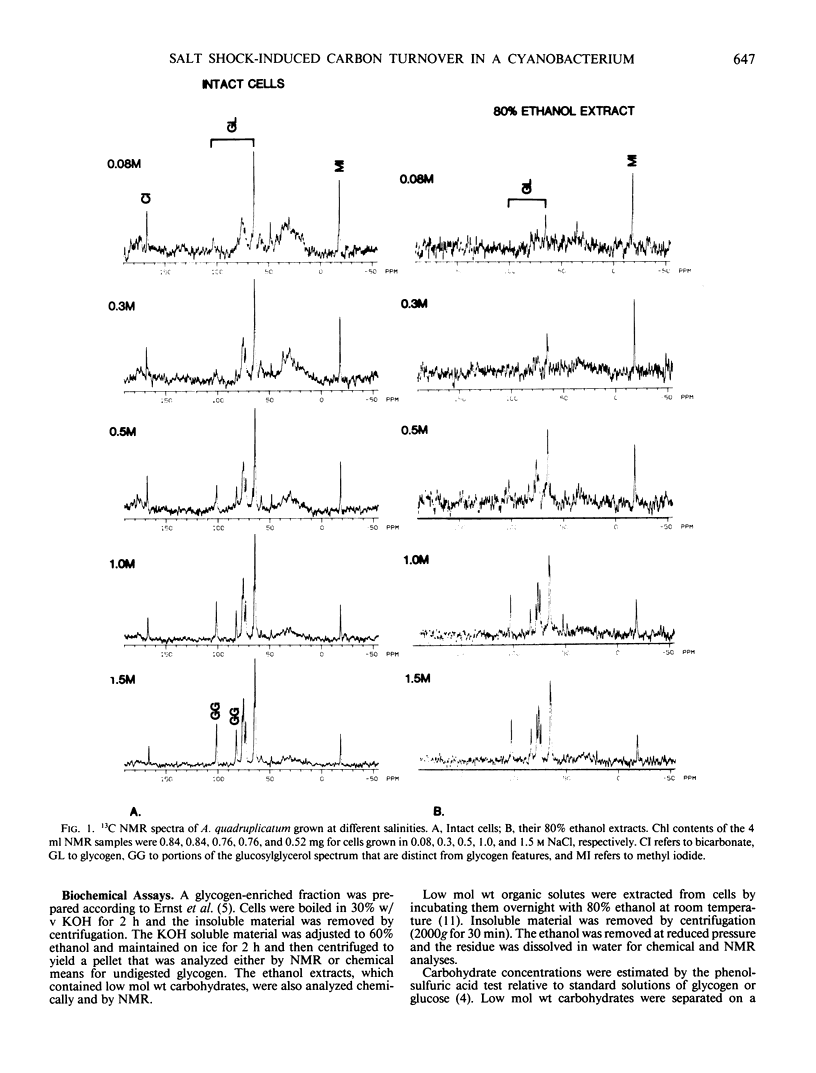
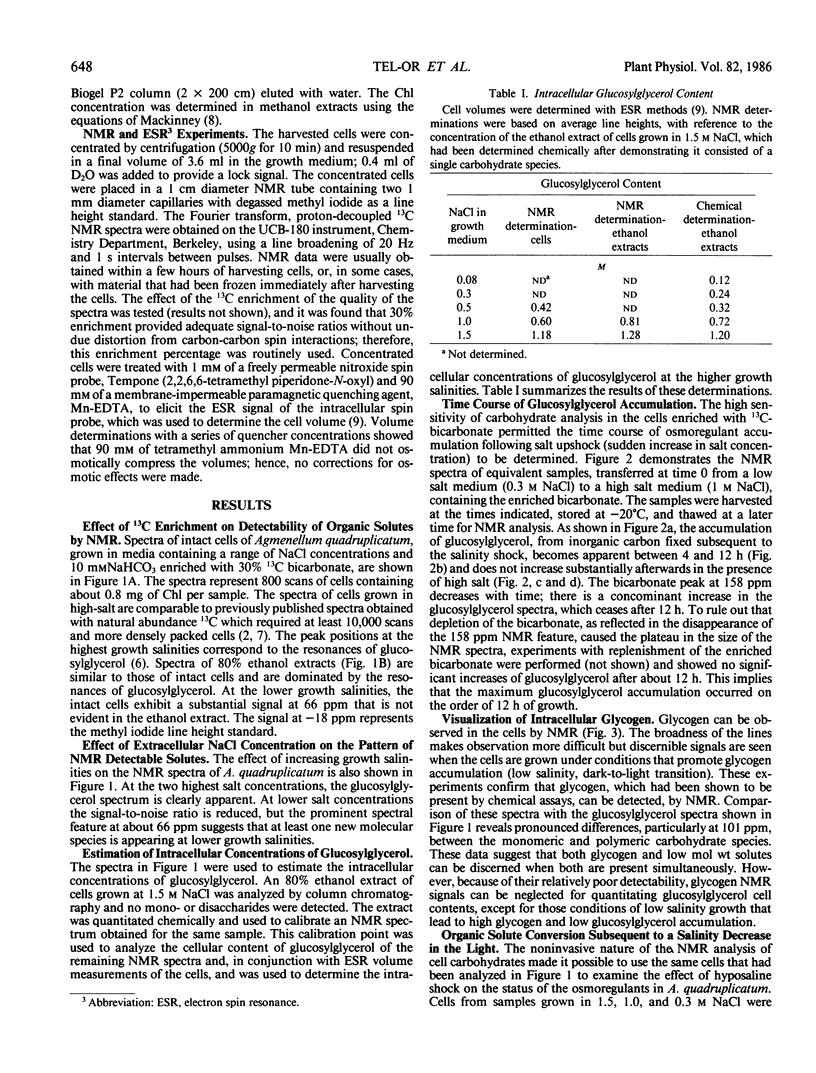
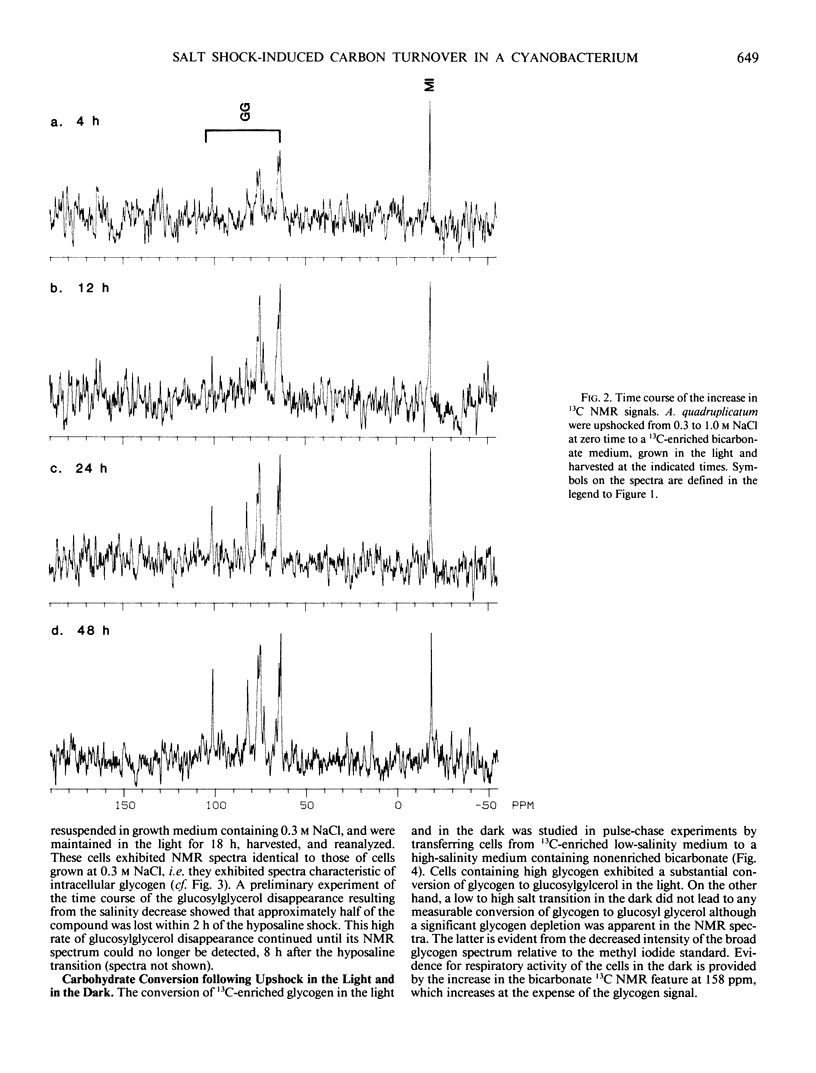
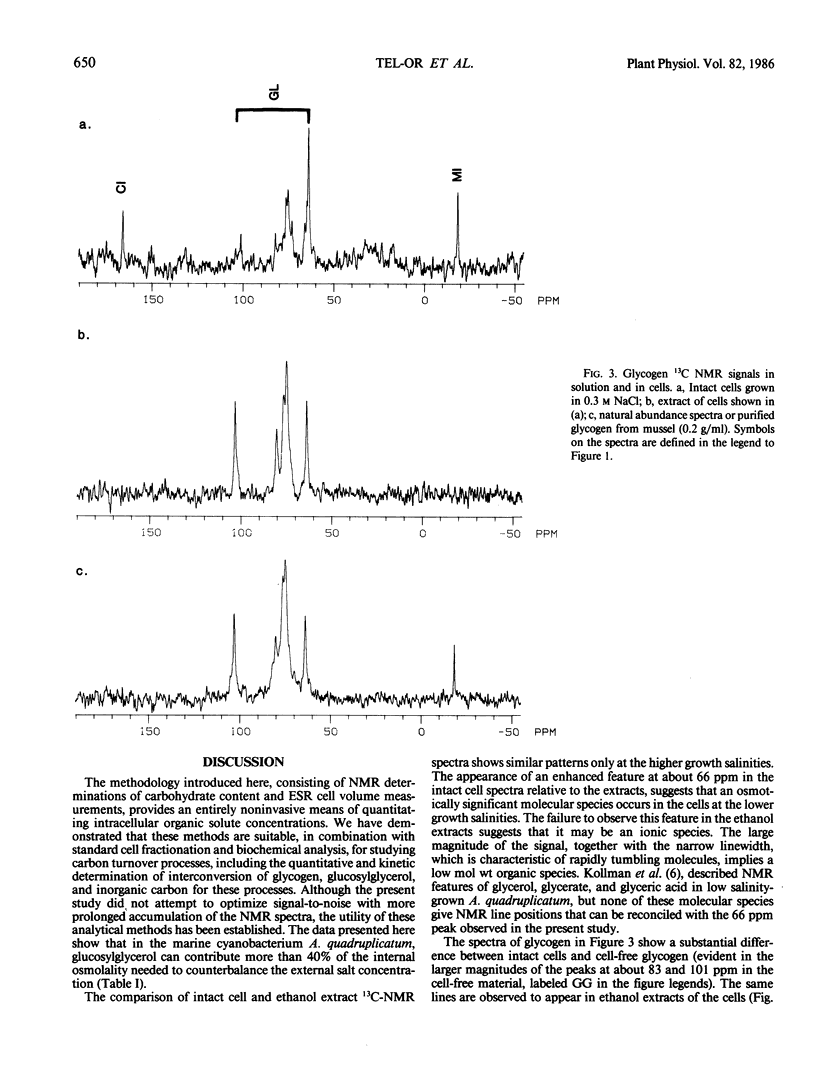
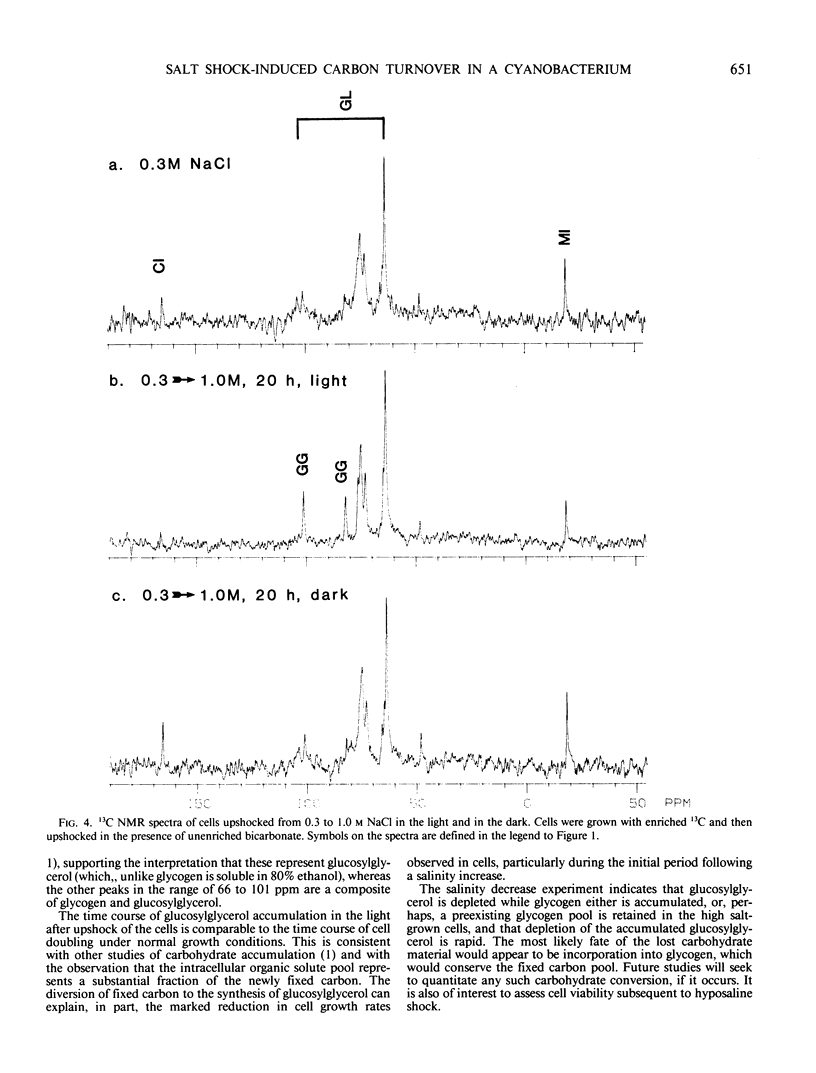
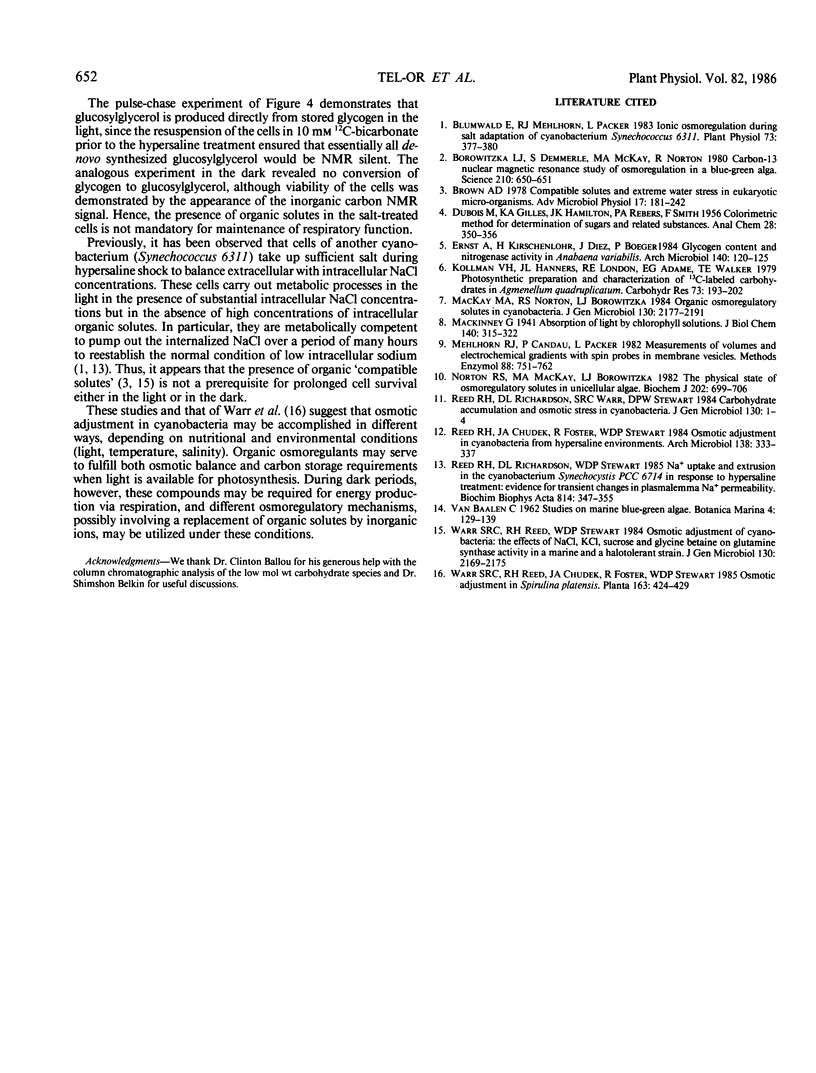
Selected References
These references are in PubMed. This may not be the complete list of references from this article.
- Blumwald E., Mehlhorn R. J., Packer L. Ionic Osmoregulation during Salt Adaptation of the Cyanobacterium Synechococcus 6311. Plant Physiol. 1983 Oct;73(2):377–380. doi: 10.1104/pp.73.2.377. [DOI] [PMC free article] [PubMed] [Google Scholar]
- Borowitzka L. J., Demmerle S., Mackay M. A., Norton R. S. Carbon-13 nuclear magnetic resonance study of osmoregulation in a blue-green alga. Science. 1980 Nov 7;210(4470):650–651. doi: 10.1126/science.210.4470.650. [DOI] [PubMed] [Google Scholar]
- Brown A. D. Compatible solutes and extreme water stress in eukaryotic micro-organisms. Adv Microb Physiol. 1978;17:181–242. doi: 10.1016/s0065-2911(08)60058-2. [DOI] [PubMed] [Google Scholar]
- Norton R. S., MacKay M. A., Borowitzka L. J. The physical state of osmoregulatory solutes in unicellular algae. A natural-abundance carbon-13 nuclear-magnetic-resonance relaxation study. Biochem J. 1982 Mar 15;202(3):699–706. doi: 10.1042/bj2020699. [DOI] [PMC free article] [PubMed] [Google Scholar]


